
The Small Intestine Complete Anatomy
The small intestine is made up of the duodenum, jejunum, and ileum. Together with the esophagus, large intestine, and the stomach, it forms the gastrointestinal tract. In living humans, the.

small intestine villi model Google Search Label image, Anatomy
This video was produced to help students of human anatomy at Modesto Junior College study our anatomical models.
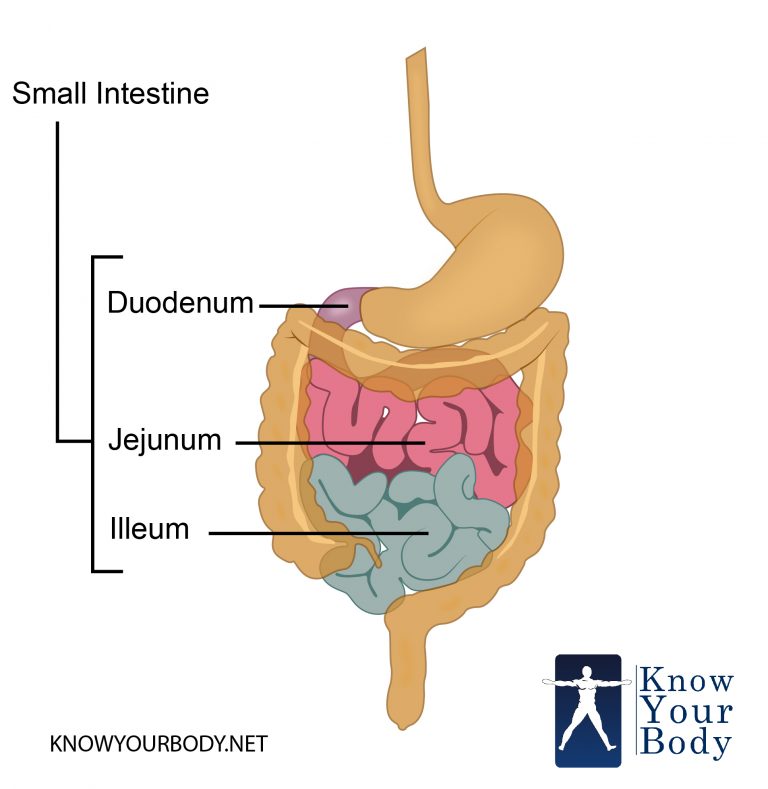
Small Intestine Function, Anatomy, Location, Length and Diagram
The digestive system. Diseases or Conditions Digestive Diseases File Size 361 KB | 1380 x 1716 File Type JPG The digestive system with sections labeled: mouth, esophagus, liver, stomach, gallbladder, pancreas, small intestine, large intestine, rectum, and anus.

Abdominal Cavity (no liver, stomach, small intestine) model STEM
The small intestine is an organ located in the gastrointestinal tract, between the stomach and the large intestine. It is on average 23ft long and is comprised of three structural parts; the duodenum, jejenum and ileum. Functionally, the small intestine is chiefly involved in the digestion and absorption of nutrients. It receives pancreatic secretions and bile through the hepatopancreatic duct.

small intestine villi model Google Search
Anatomy (Macroscopy) The small intestine is a specialized tubular structure within the abdominal cavity in continuity with the stomach proximally and the colon distally. The small bowel is about 6 m in the adult. Three subdivisions; "the duodenum, jejunum, and ileum"are defined and characterized by various anatomic relationships.
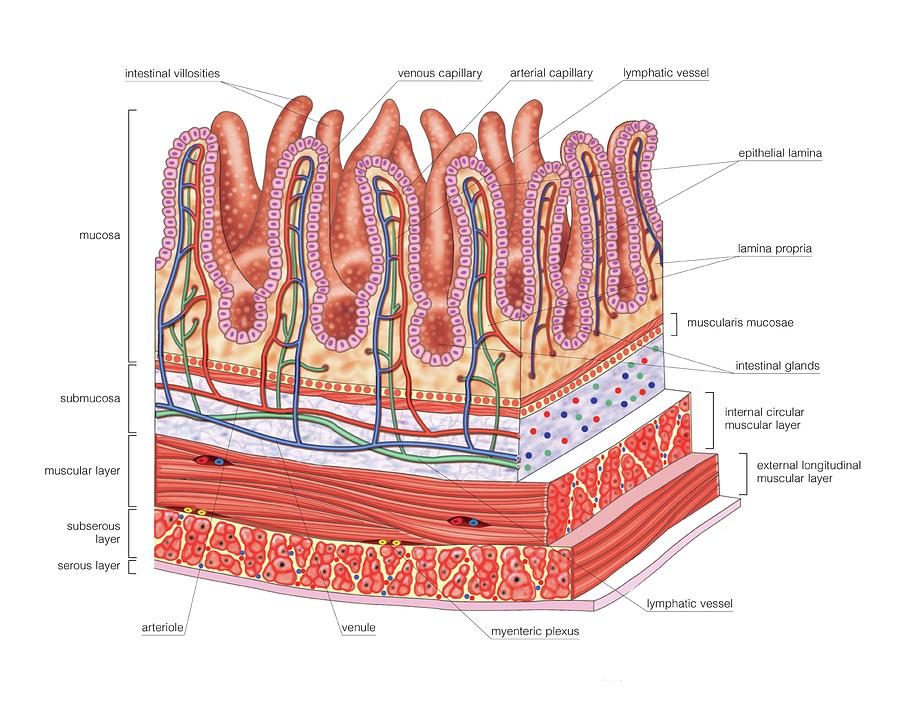
Small Intestine Photograph by Asklepios Medical Atlas Pixels
1/4 Synonyms: none The small intestine is the longest part of the digestive system. It extends from the stomach ( pylorus) to the large intestine ( cecum) and consists of three parts: duodenum, jejunum and ileum. The main functions of the small intestine are to complete digestion of food and to absorb nutrients.

small intestine histology labeled lab practical pics Human anatomy
CCC Online Biology Lab - small intestine histology model labeled and unlabeled. Dr. E 421 subscribers Subscribe 132 views 2 years ago Digestive System Silent photo tour of the small.
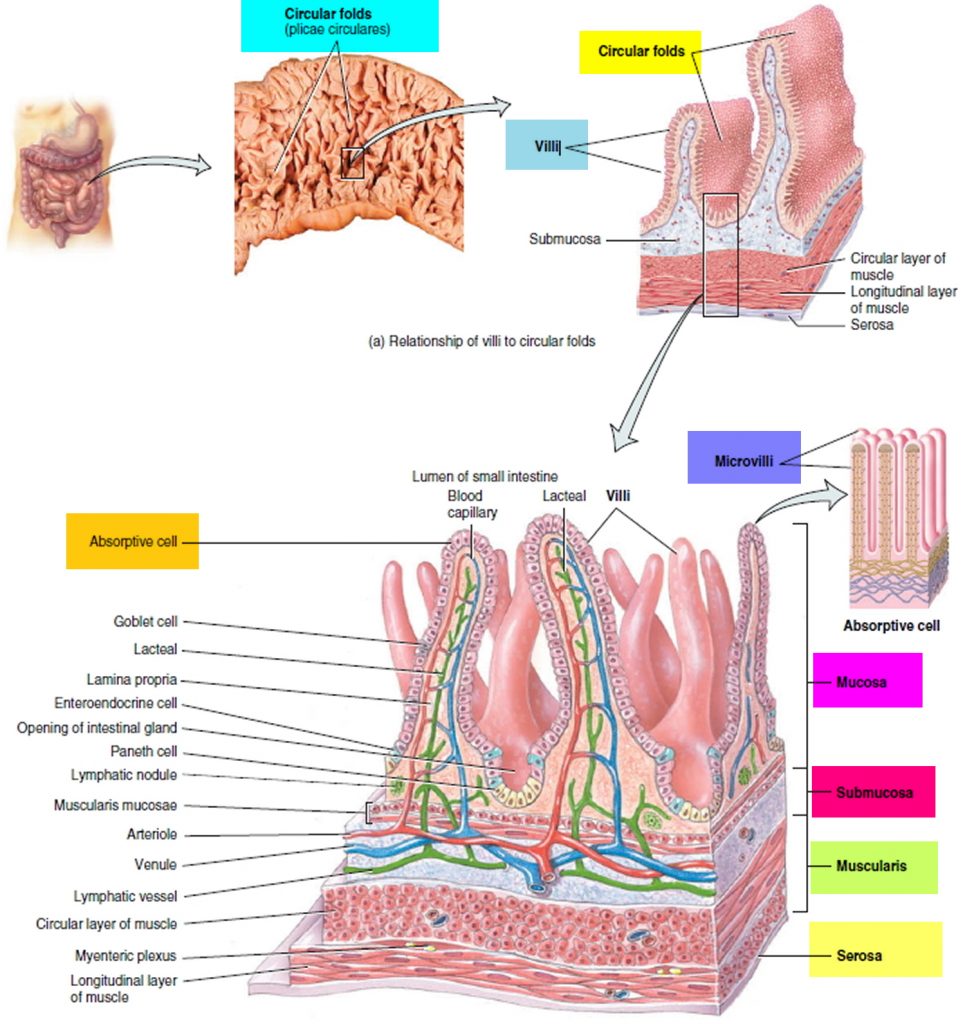
Small Intestine Location, Function, Length and Parts of the Small Intestine
Content:Introduction 0:00Small Intestine Overview: 00:40Duodenum: 01:14Jejunum and Ileum: 03:39Anatomical Structures of the Duodenum: 6:48Anatomical Structur.

small intestine histology labeled Buscar con Google Para Histo
Absorption, Feces Formation, and Defecation. The small intestine absorbs about 90 percent of the water you ingest (either as liquid or within solid food). The large intestine absorbs most of the remaining water, a process that converts the liquid chyme residue into semisolid feces ("stool").

Image result for digestive system models labeled Digestive system
The small intestine is part of your digestive system. It makes up part of the long pathway that food takes through your body, called the gastrointestinal (GI) tract. When food leaves your stomach, it enters the small intestine, also called the small bowel. The small bowel connects to the large bowel, also called the large intestine or colon.
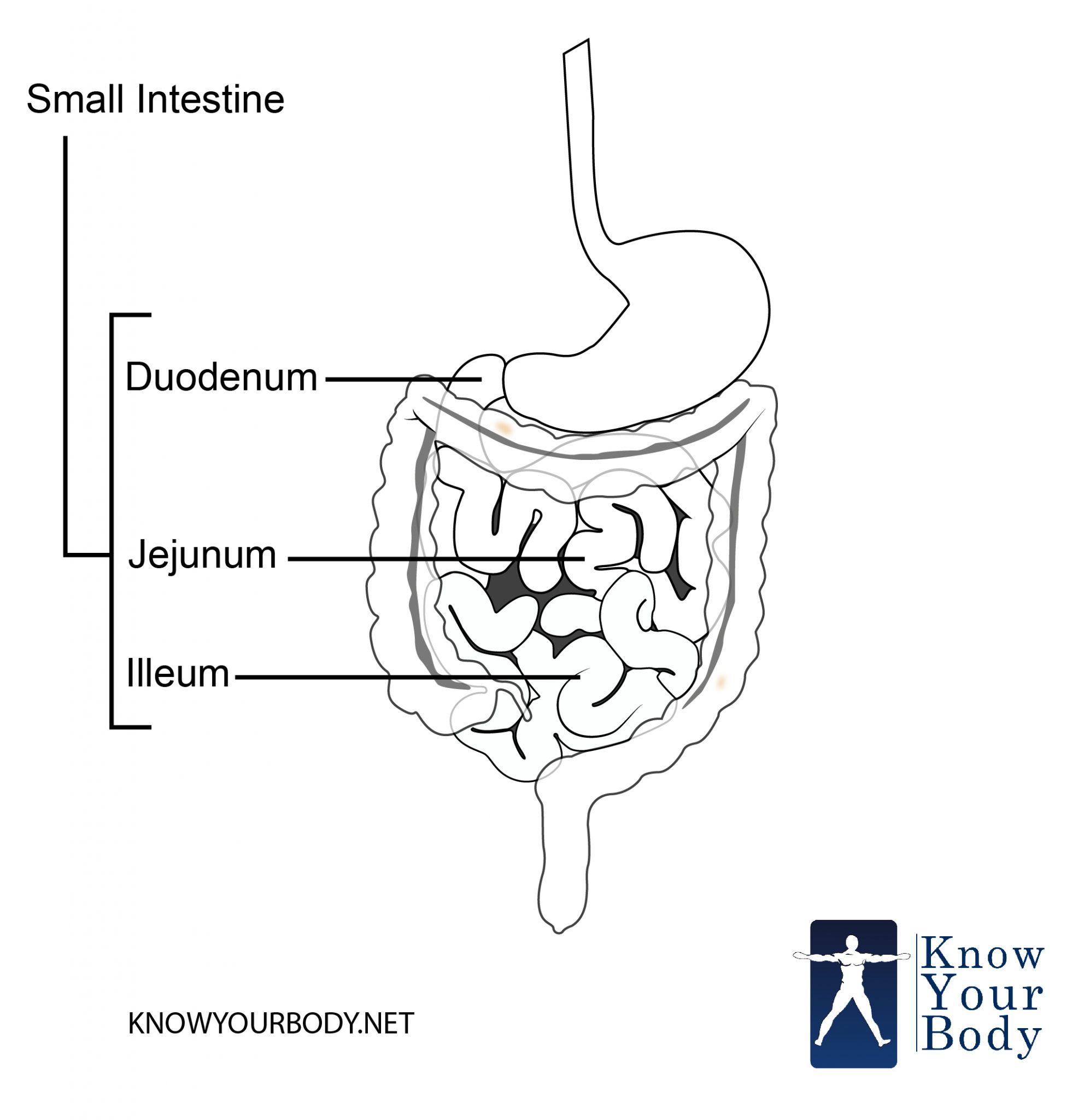
Small Intestine Function, Anatomy, Location, Length and Diagram
Structure The coiled tube of the small intestine is subdivided into three regions. From proximal (at the stomach) to distal, these are the duodenum, jejunum, and ileum ( Figure 23.18 ). The shortest region is the 25.4-cm (10-in) duodenum, which begins at the pyloric sphincter.

Small and large intestine labeled Large intestine, Anatomy, Colon
The small intestine has three distinct regions - the duodenum, jejunum, and ileum.. The primary function of the small intestine is the absorption of nutri.
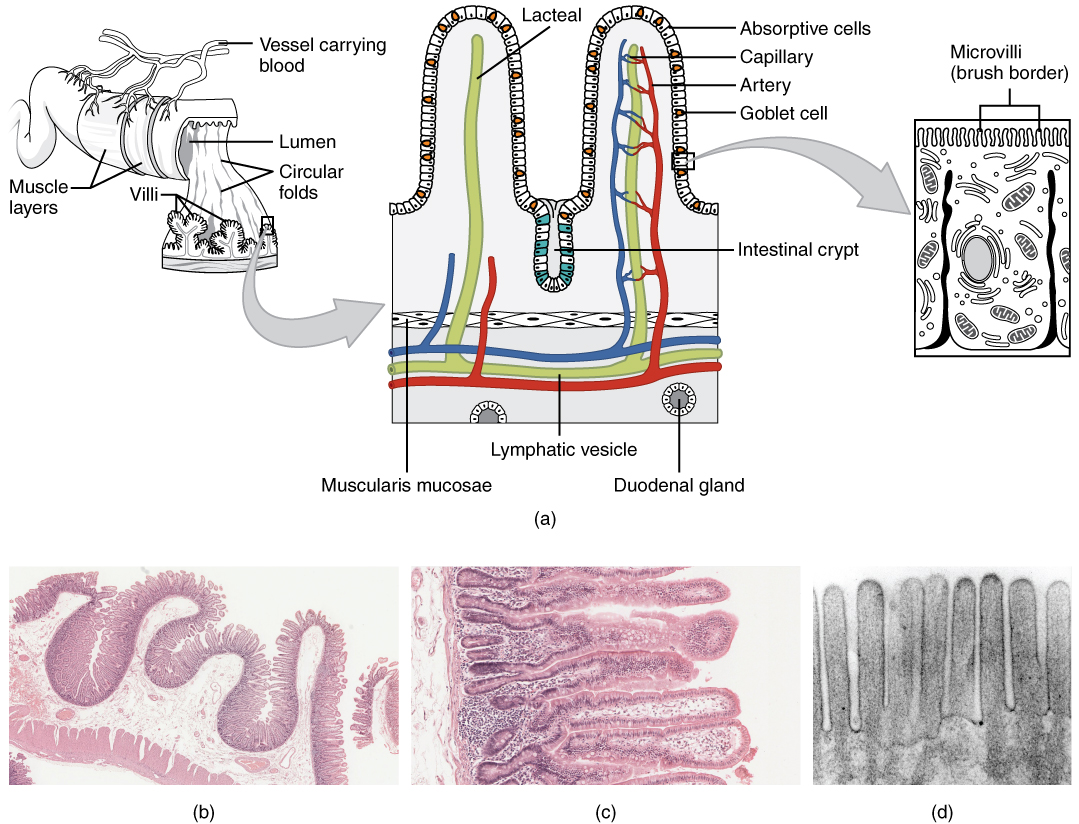
The Small and Large Intestines · Anatomy and Physiology
The Small Intestine's Layers. Section of duodenum: This image shows the layers of the duodenum: the serosa, muscularis, submucosa, and mucosa. The small intestine has four tissue layers: The serosa is the outermost layer of the intestine. The serosa is a smooth membrane consisting of a thin layer of cells that secrete serous fluid, and a thin.
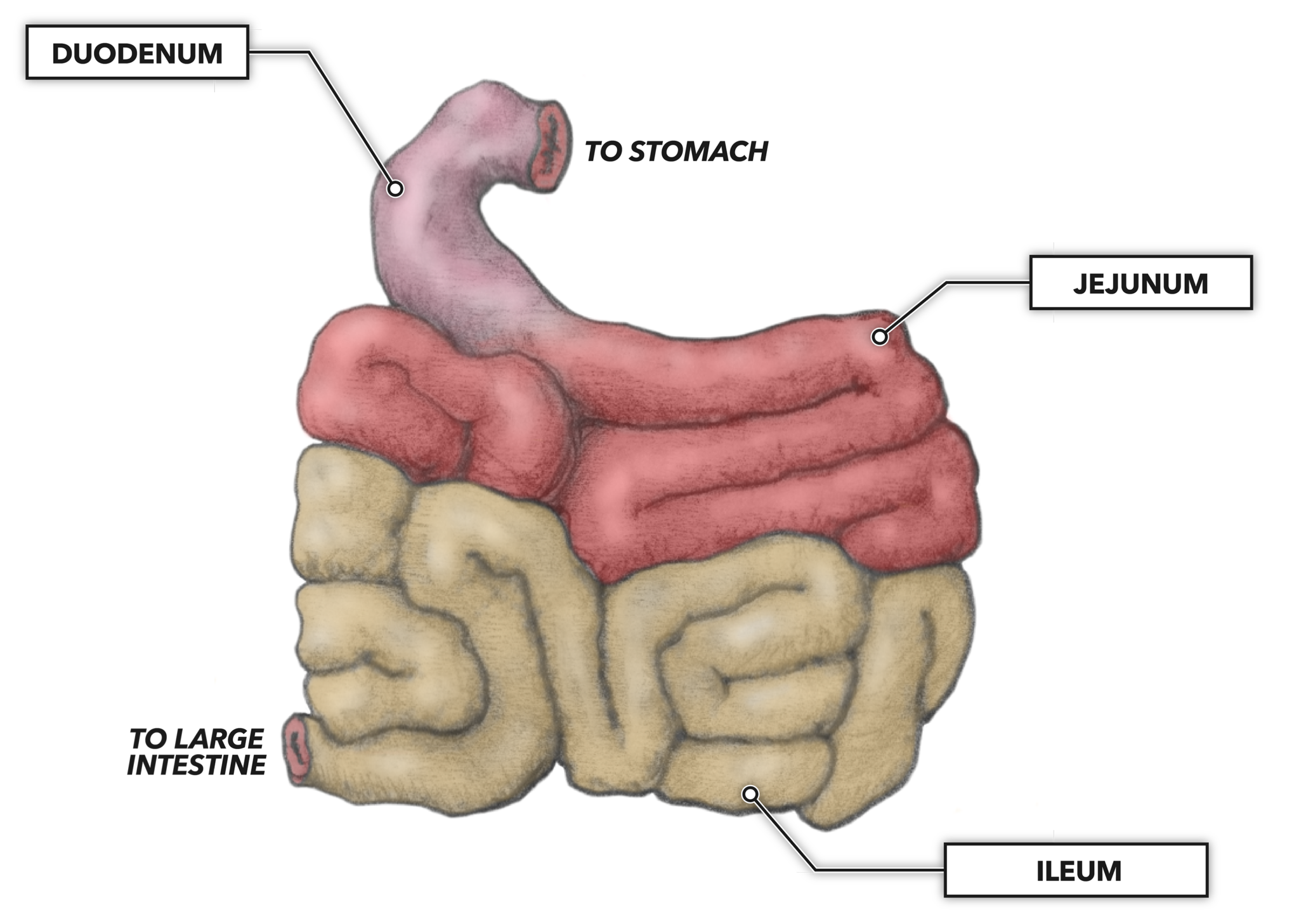
CrossFit The Gastrointestinal System Small Intestine
The small intestine is a crucial component of the digestive system that allows for the breakdown and absorption of important nutrients that permits the body to function at its peak performance. The small intestine accomplishes this via a complex network of blood vessels, nerves, and muscles that work together to achieve this task. It is a massive organ that has an average length of 3 to 5.

small intestine villi model labeled Google Search anatomy
1 Click the card to flip 👆 1 / 11 Flashcards Learn Test Match Created by Terms in this set (11) villus columnar epithelium intestinal crypt 3 muscularis mucosae 4 circular muscle layer 5 longitudinal muscle layer 6 lacteal 7 mucosa 8 submucosa 9 muscularis externa 10 Students also viewed model of villi in duodenum of small intestine 17 terms Images

CCC Online Biology Lab small intestine histology model labeled and
small intestine, a long, narrow, folded or coiled tube extending from the stomach to the large intestine; it is the region where most digestion and absorption of food takes place. It is about 6.7 to 7.6 metres (22 to 25 feet) long, highly convoluted, and contained in the central and lower abdominal cavity.